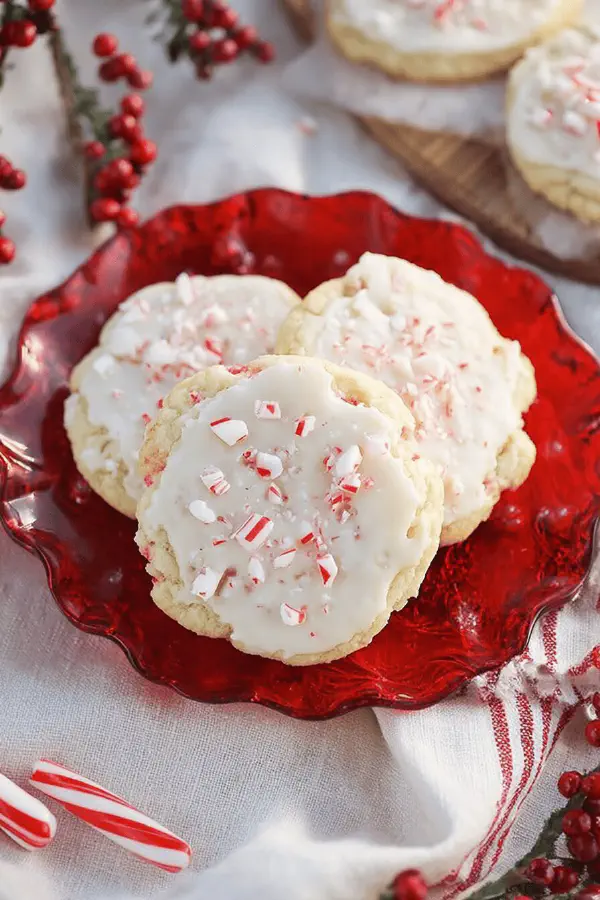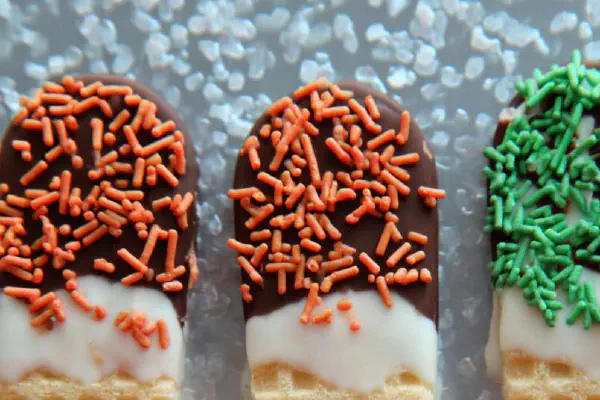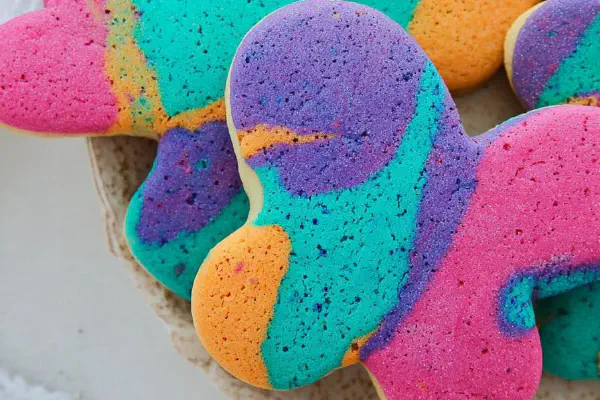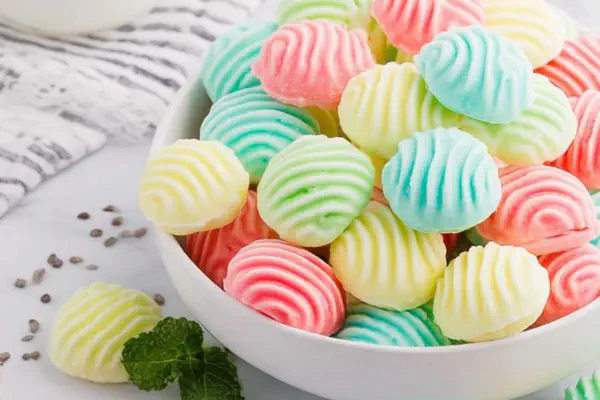Featured Recipe
Peppermint Candy Cookies

By Kate
"
A quick batch of peppermint cookies using boxed cake mix and a few pantry staples. Crushed candy canes add crunch and cool mint flavor. White chocolate chips provide sweet pockets of softness amid tender crumb. Powdered sugar icing finishes with a sweet glaze and extra peppermint sprinkle. Easy tweaks to swap cake mix for spice or vanilla. Adjust candy types or chips for variety. Watch dough texture—too wet means add a touch more flour. Flattening dough ensures even baking and characteristic cracking on top. Cool fully before glazing to avoid melting. Cookies snap and smell sharply of mint as they bake.
"
Prep:
6 min
Cook:
14 min
Total:
20 min
Serves:
24 servings
cookies
holiday
easy recipes
peppermint
Introduction
Quick fix when you want holiday flavor without fuss. That boxed cake mix cuts down mixing and measuring hassle—trust me, cake mix works here, making the crumb tender but sturdy. Peppermint candies crushed give bursts of mint and crunch inside a soft cookie shell. White chocolate chips add creamy pockets so you don’t just get peppermint the whole time. You’ll want to preload your baking sheets because these bake fast, and they crack just right when flattened properly. This isn’t one to eyeball texture at raw stage too roughly—dough’s sticky but manageable. And glazing at the end is not optional. It seals in sweetness with a crisp sugary shell and festive look. If you’re out of cake mix, spice or funfetti versions will swap but expect slight texture change. Watch baking temps—oven variations mean cracking too early or browning edges if too hot, so rely on visual crack cues more than timer.
Ingredients
About the ingredients
Boxed cake mix is the shortcut backbone here; white or yellow has best texture and neutral flavor. Flour addition adjusts dough firmness — too little, and cookies slump and spread flat; too much, and brittle. Eggs bind and add richness but not too many or dough gets cakey versus chewy. Vegetable oil preferred for moistness; melted coconut oil works but watch flavor clash. Candy canes crushed not powdered, chunky bits create texture and bursts; avoid fine powder as that can bleed color and discolor dough. White chocolate chips can bend to your liking—chunks or mini chips work. For glaze, thicker consistency means easy drizzle without running off cookie edges; thin with milk gradually. Powdered sugar quality affects final texture—sift before use to avoid lumps.
Method
Technique Tips
Preheat fully before mixing dough; uneven heat skews spreading and texture. Mixing cake mix and flour dry together first ensures even distribution prior to wet. Paddle attachment or hand mixing slowly prevents gluten development—overmix toughens cookies. Folding candies in by hand distributes evenly without breaking chips. Use parchment or silicone mats for easy removal and to maintain shape edges—greased sheets cause spreading and distorted cookies. Pressing cookies flat after scooping creates characteristic cracking on slowly drying top. Baking time is variable: watch for subtle surface cracks and loss of glossiness; edges must stay pale to keep soft chew inside. Cooling completely is essential—warm dough melts glaze and chocolate, ruining texture and look. Drizzling glaze while cookies cool locks in sweetness and adds contrasting texture. Store airtight; freeze dough if needed—little flavor lost upon baking later.
Chef's Notes
- 💡 Use room temp eggs. Helps dough blend smoother. Cold eggs can shock the mix. Room temp = better incorporation.
- 💡 Don’t skip crushing candy canes. Big chunks give crunch. Powdered candy can fade color, look off. Aim for coarse bits.
- 💡 Baking sheet choice matters. Use parchment or silicone mats. A greased pan causes spreading and weird shapes. Keep edges defined.
- 💡 Oven temperature is crucial. Too hot? Edges brown too fast. Too cool? Cookies don’t crack properly. Use visual cues.
- 💡 For glaze, adjust milk carefully. Thin out slowly for drizzle. A thick glaze runs off cookies. Aim for just right.
Kitchen Wisdom
What should dough look like?
Thick and slightly sticky. Holds shape. If too wet, add more flour. Press if needed.
Can I use a different cake mix?
Yes, spice or vanilla work. Expect slight texture differences. But watch moisture.
Cookies didn’t crack as expected?
Oven temp too hot or cold. Press down more before baking to help cracking.
How to store leftover cookies?
Keep airtight at room temp. They last 3 days max. Freeze dough balls for freshness.



